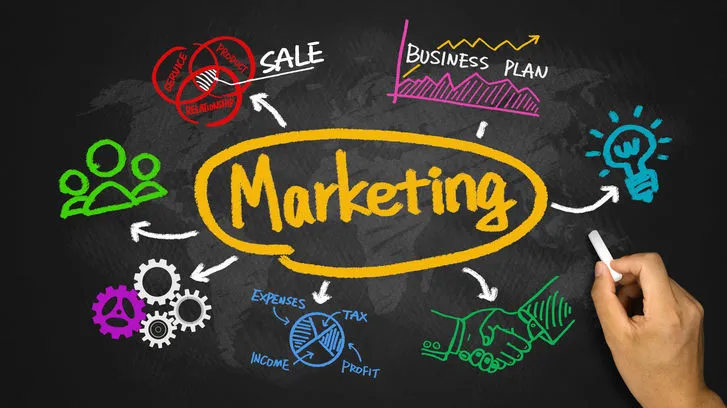In the cutthroat world of business, where companies are constantly vying for attention and loyalty, it’s easy to get lost in the noise. But what if we told you that the key to standing out from the crowd lies not in flashy marketing tactics or gimmicky promotions, but rather in a profound understanding of your customers’ deepest needs and desires? When businesses prioritize customer needs, a virtuous cycle is set in motion, where innovation and loyalty become intertwined. By listening to and addressing the pain points of their customers, companies can unlock a treasure trove of opportunities for growth, improvement, and loyalty. In this blog post, we’ll delve into the fascinating dynamics of this cycle, exploring how customer needs can spark innovation, drive loyalty, and ultimately propel businesses towards long-term success.
Introduction to the Virtuous Cycle
In the fast-paced and ever-evolving world of business, companies are constantly seeking ways to stay ahead of the curve and build a loyal customer base. Amidst the noise of competition, it’s easy to get caught up in the latest trends and tactics, but what if we told you there’s a secret to driving innovation and loyalty that’s been hiding in plain sight? Enter the Virtuous Cycle, a powerful framework that harnesses the spark of customer needs to fuel a self-sustaining cycle of innovation, loyalty, and growth.
At its core, the Virtuous Cycle is a dynamic interplay between a company’s ability to understand and respond to customer needs, and the customer’s subsequent loyalty and advocacy. It’s a chicken-and-egg scenario, where each element reinforces and amplifies the other, creating a perpetual motion of value creation and exchange. By putting the customer at the heart of the cycle, companies can tap into a rich source of inspiration, drive meaningful innovation, and build a loyal following that will propel them forward.
In this blog post, we’ll delve deeper into the Virtuous Cycle, exploring its key components, the benefits of embracing this approach, and practical strategies for putting it into action. By the end of this journey, you’ll be equipped with the knowledge and insights to spark a virtuous cycle of innovation and loyalty within your own organization, setting yourself up for long-term success and customer devotion.
The Power of Customer Needs
At the heart of every successful business lies a deep understanding of customer needs. It’s the spark that sets the virtuous cycle of innovation and loyalty in motion. When companies take the time to truly listen to their customers, they uncover a wealth of valuable insights that can inform product development, improve customer experiences, and drive business growth. Customer needs are the north star that guides innovation, ensuring that every effort is focused on creating solutions that meet real, tangible demands. By prioritizing customer needs, businesses can break free from the constraints of assumption and intuition, and instead, build products and services that are tailored to the unique pain points and desires of their target audience. This, in turn, fosters a sense of loyalty and appreciation, as customers feel seen, heard, and valued. By putting customer needs at the forefront, businesses can create a self-reinforcing cycle of innovation, where customer feedback and insights fuel the development of new solutions, which in turn, drive even greater customer satisfaction and loyalty.
Understanding the Customer’s Voice
The customer’s voice is the most powerful catalyst for innovation and loyalty. It’s the whisper that guides you towards creating products and services that truly resonate with your audience. To truly understand the customer’s voice, you need to listen to their stories, concerns, and desires. This requires a deep commitment to empathy and a willingness to immerse yourself in their world. By doing so, you’ll uncover the unmet needs, the pain points, and the aspirations that drive their behavior.
You can achieve this by conducting customer surveys, gathering feedback, and analyzing online reviews. But it’s not just about collecting data; it’s about deciphering the emotions, motivations, and values that underlie their words. It’s about creating a customer-centric culture that encourages every team member to put themselves in the customer’s shoes.
When you genuinely understand the customer’s voice, you’ll start to identify patterns and opportunities that can spark innovation. You’ll develop solutions that address real needs, rather than just creating products or services that you think they might want. And as you respond to their needs, you’ll build trust, loyalty, and a deep connection that will keep them coming back for more. The virtuous cycle begins here, where customer needs spark innovation, and innovation sparks loyalty.
How Customer Needs Drive Innovation
At the heart of the virtuous cycle lies a deep understanding of customer needs. It’s the spark that ignites the innovation engine, driving businesses to create solutions that meet the evolving expectations of their customers. When companies truly listen to their customers, they uncover pain points, desires, and untapped opportunities that can be leveraged to develop groundbreaking products, services, and experiences. This customer-centric approach fosters a culture of innovation, where empathy and creativity converge to produce game-changing solutions. For instance, a company that sells outdoor gear might discover that their customers are struggling to find reliable waterproof jackets. By responding to this need, they can design and develop a revolutionary waterproof material that not only exceeds customer expectations but also sets a new industry standard. By continuously iterating and refining their offerings based on customer feedback, businesses can create a self-sustaining cycle of innovation, further solidifying customer loyalty and driving long-term growth.
The Importance of Empathy in Innovation
Empathy is the unsung hero of innovation, and it’s the secret sauce that sets apart companies that truly understand their customers from those that are just trying to make a sale. When you put yourself in your customers’ shoes, you begin to see the world from their perspective. You feel their pain points, their frustrations, and their desires. You start to understand what keeps them up at night, what they’re struggling with, and what they’re hoping to achieve.
Empathy is not just about feeling sorry for your customers; it’s about using that understanding to create solutions that genuinely improve their lives. When you empathize with your customers, you’re able to identify the gaps in your product or service that need to be filled. You’re able to anticipate their needs and create innovative solutions that meet them.
Innovation driven by empathy is not just about creating new features or products; it’s about creating a seamless, intuitive, and personalized experience that makes your customers feel seen, heard, and valued. It’s about showing them that you care, that you’re invested in their success, and that you’re committed to helping them achieve their goals. When you innovate with empathy, you build trust, loyalty, and a deep emotional connection with your customers. And that’s the virtuous cycle that drives growth, retention, and ultimately, long-term success.
Case Study: A Company that Got it Right
A shining example of a company that has successfully harnessed the power of customer needs to drive innovation and loyalty is Warby Parker, the trendy eyewear brand. From its humble beginnings as a startup, Warby Parker has disrupted the traditional eyeglass industry by putting the customer at the forefront of its business strategy.
Warby Parker’s founders, Neil Blumenthal and Dave Gilboa, were frustrated with the high cost and limited selection of eyeglasses available in the market. They saw an opportunity to create a brand that not only offered stylish and affordable glasses but also provided an exceptional customer experience. By listening to customer feedback and concerns, Warby Parker has been able to innovate and improve its products and services continuously.
One of the key innovations that Warby Parker introduced was its home try-on program, which allows customers to try up to five frames at home for free. This feature was a direct response to customer complaints about the traditional eyeglass shopping experience, which often involved awkward in-store try-ons and high-pressure sales tactics. By giving customers the freedom to try frames in the comfort of their own homes, Warby Parker has been able to build trust and loyalty with its customers.
Warby Parker’s commitment to customer satisfaction has also led to the development of its virtual try-on feature, which uses augmented reality to allow customers to see how frames would look on their face without having to physically try them on. This feature has not only improved the customer experience but has also reduced returns and increased sales.
Through its customer-centric approach, Warby Parker has been able to build a loyal customer base and drive business growth. The company’s focus on innovation and customer satisfaction has earned it a loyal following, with over 70% of customers returning to make repeat purchases. Warby Parker’s success is a testament to the power of putting customer needs at the forefront of business strategy, and it serves as a shining example for companies looking to build loyalty and drive innovation.
The Role of Feedback in the Virtuous Cycle
The role of feedback in the virtuous cycle is a crucial one. It’s the spark that sets the cycle in motion, and the fuel that keeps it going. Customer feedback is the lifeblood of innovation, providing valuable insights into what customers need, want, and expect from a product or service. It’s the voice of the customer, loud and clear, guiding businesses towards creating solutions that meet their needs.
When customers provide feedback, they’re not just complaining or suggesting – they’re investing in the brand. They’re taking the time to share their thoughts, hopes, and frustrations, in the hopes that the brand will listen and respond. And when brands do respond, magic happens. Customers feel heard, validated, and appreciated. They begin to feel a sense of ownership and loyalty, knowing that their input has made a tangible difference.
In the virtuous cycle, feedback is the catalyst that drives innovation. It’s the thread that weaves together customer needs, business goals, and product development. By listening to and acting on customer feedback, businesses can create products and services that are tailored to their needs, solving real problems and making a meaningful impact. And when customers experience the positive impact of their feedback, they’re more likely to become loyal advocates, spreading the word about the brand and driving growth.
How to Collect and Act on Customer Feedback
Collecting and acting on customer feedback is a crucial step in the virtuous cycle of innovation and loyalty. It’s the key to unlocking the treasure trove of insights that can help you refine your products, services, and overall customer experience. But, it’s not just about collecting feedback; it’s about doing something meaningful with it. When customers take the time to share their thoughts, they’re essentially giving you a roadmap to their hearts and minds. It’s up to you to decipher the clues and make the necessary adjustments to create a more personalized and satisfying experience.
Effective customer feedback collection involves multiple channels, including surveys, social media, review sites, and in-person interactions. By casting a wide net, you can capture a diverse range of opinions and perspectives. But, don’t just stop at collection; make sure to respond promptly and thoughtfully to customer feedback. This shows that you value their input and are committed to continuous improvement. Moreover, it’s essential to close the loop by implementing changes and communicating them back to your customers. This demonstrates that their voices are being heard and that you’re dedicated to building a loyal community of customers who will advocate for your brand.
From Innovation to Loyalty
The culmination of understanding and meeting customer needs is the ultimate goal of every business: loyalty. When customers feel heard and seen, they’re more likely to become loyal advocates of your brand. This is where the virtuous cycle truly comes full circle. By innovating and delivering solutions that address their pain points, you’re not only solving their problems but also building a deep sense of trust and appreciation.
Loyal customers are the lifeblood of any successful business. They’re the ones who will return time and time again, making repeat purchases and recommending your brand to others. They’re also more likely to forgive mistakes and provide constructive feedback, helping you to continually improve and refine your offerings.
But loyalty is not just about retention; it’s also a powerful driver of growth. When customers feel loyal to a brand, they’re more likely to try new products or services, participate in beta testing, and even become brand ambassadors. This, in turn, fuels further innovation, as businesses can tap into the collective wisdom and enthusiasm of their loyal customer base to develop new solutions that meet emerging needs. And so, the virtuous cycle continues, with innovation and loyalty feeding into each other in a continuous loop of growth and improvement.
The Long-term Benefits of the Virtuous Cycle
The virtuous cycle is a self-reinforcing phenomenon that yields long-term benefits that far exceed the initial investment. As you focus on understanding and meeting your customers’ needs, you’ll find that their loyalty and trust in your brand grow exponentially. This, in turn, fuels a cycle of innovation, as customers become more willing to share their feedback and insights, driving the development of new products and services that meet their evolving needs.
Over time, this cycle yields a loyal customer base that becomes a powerful marketing force, driving word-of-mouth referrals and online reviews that attract new customers. As your brand reputation grows, so too does your market share, allowing you to invest even more in R&D, further solidifying your competitive advantage.
The long-term benefits of the virtuous cycle are multifaceted and far-reaching. You’ll see increased customer retention rates, higher average order values, and a significant reduction in customer acquisition costs. Your brand will become synonymous with quality, trust, and innovation, making it a magnet for top talent and strategic partnerships.
Perhaps most importantly, the virtuous cycle fosters a culture of customer-centricity within your organization, ensuring that every decision is made with the customer’s needs at its core. This mindset shift has a profound impact on your business, driving sustainable growth, profitability, and a competitive edge that’s hard to match.
Breaking the Cycle: What Happens When You Ignore Customer Needs
When companies neglect to prioritize customer needs, they risk breaking the virtuous cycle of innovation and loyalty. This oversight can have far-reaching consequences, leading to a downward spiral of disengagement and dissatisfaction. Without a deep understanding of customer needs, businesses may find themselves designing products or services that fail to resonate with their target audience. As a result, customers begin to feel unheard and unvalued, leading to a decline in loyalty and ultimately, a loss of business.
The effects of ignoring customer needs can be devastating. A company’s reputation may suffer as negative reviews and word-of-mouth spread, making it increasingly difficult to attract new customers. Moreover, the lack of innovation and progress can lead to stagnation, causing the business to fall behind competitors who are more attuned to the needs of their customers. As the gap between customer expectations and the company’s offerings widens, the relationship between the business and its customers begins to fray. Without a concerted effort to re-engage with customers and address their needs, the cycle of innovation and loyalty can be broken, leaving the company struggling to recover.
Conclusion: Putting the Virtuous Cycle into Practice
In conclusion, the virtuous cycle of customer needs, innovation, and loyalty is a powerful engine that can drive business success. By putting the customer at the heart of your strategy, you can unlock a cycle of continuous improvement, where customer needs spark innovation, and innovation in turn fuels loyalty. This is not a one-time achievement, but a continuous process that requires dedication, empathy, and a willingness to listen and adapt.
As you embark on this journey, remember that customer needs are constantly evolving, and it’s up to you to stay ahead of the curve. By fostering a culture of customer-centricity, encouraging open communication, and empowering your teams to innovate, you’ll be well on your way to creating a loyal customer base that will drive your business forward.
So, take the first step today. Start by listening to your customers, understanding their needs, and using that insight to drive innovation. Then, watch as loyalty and advocacy grow, and your business thrives as a result. The virtuous cycle is waiting for you – are you ready to put it into practice?
As we conclude our journey through the virtuous cycle of customer needs, innovation, and loyalty, we hope you’re inspired to ignite a spark of innovation within your organization. By putting the customer at the heart of your business, you’ll unlock a powerful cycle of growth, loyalty, and long-term success. Remember, understanding customer needs is not a one-time event, but a continuous process that fuels innovation, drives loyalty, and sets your business apart from the competition. Embrace the virtuous cycle, and watch your customers become your most loyal advocates, driving your business forward to new heights.











About The Author
Janus Andersen
Advice on Strategy | Innovation | Transformation | Leadership Helping growth strategies and M&A transactions for 20 years